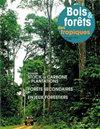墨西哥热带森林管理的最低限度趋势:动机和经验
IF 0.6
4区 农林科学
Q3 FORESTRY
引用次数: 0
摘要
世界各地的热带木材地区都面临着共同的问题,如木材采伐后的退化和再生不良。玛雅人通过刀耕火种进行的传统土地管理现在被认为是更新多物种热带森林林分的有效途径。墨西哥森林管理的刀耕火种做法导致了区域管制,使土地价值成为评估替代森林计划的一种方便手段。使用预期土地价值作为绩效指标将管理者的注意力从管理物种组合转移到平衡清算或保留现有生物量之间的财务权衡。由于整个森林的剩余存量如此之大,土地价值压倒了木材销售收入的重要性。墨西哥热带地区在三十年的时间里出现了几种类似的森林管理方法,代表了一种继承的森林管理系统。这里描述了PS产生的渐进式创新,以及PS实践的例子。如今,PS方法为墨西哥不同地区总计155814公顷的土地提供了管理。从长远来看,PS的性能将变得明显;与此同时,私人土地所有者和监管机构对PS的接受等同于对PS设计的积极、独立的意见。墨西哥的经验为合理管理各类森林提供了途径。例如,值得复制的PS特征是,在决策中纳入干扰模式作为因素,以及在道路、林地、封闭森林、山顶、沼泽、河岸带、空地和森林边缘使用特定的造林制度。本文章由计算机程序翻译,如有差异,请以英文原文为准。
Tendencias minimalistas en la gestión de los bosques tropicales mexicanos: motivaciones y experiencias
Tropical timber regions across the world share common problems such as degradation and poor regeneration after timber harvesting. Traditional Mayan land management through slash and burn is now recognized as an effective way of renewing forest stands in multispecies tropical forests. The practice of slash and burn for forest management in Mexico has led to area regulation, which has made land value a convenient means of assessing alternative forest plans. The use of expected land value as a performance indicator shifts the manager's attention from managing a species mix to balancing financial tradeoffs between liquidation or retention of the standing biomass. Since the forest-wide residual stock is so large, land value overrides the importance of revenue from timber sales. Several forest management methods along these lines have appeared in tropical regions of Mexico over a thirty-year time span and represent a patrimonial system of forest management (PS). The gradual innovation generated by PS is described here, as well as examples of PS practices. PS methods today provide stewardship for a total of 155,814 ha in different parts of Mexico. PS performance will become evident in the long run; in the meantime, the embrace of PS by private landowners and regulatory institutions is equated with a positive, independent opinion about PS design. The Mexican experience suggests pathways for rational management of all types of forests. PS features that are worth replicating are, for instance, the inclusion of disturbance patterns as factors in decision making, as well as the use of specific silvicultural regimes for roads, woodlands, closed forests, hilltops, swamps, riparian zones, clearings and forest edges.
求助全文
通过发布文献求助,成功后即可免费获取论文全文。
去求助
来源期刊

Bois et Forets Des Tropiques
FORESTRY-
CiteScore
1.50
自引率
16.70%
发文量
31
审稿时长
>12 weeks
期刊介绍:
In 1947, the former Tropical Forest Technical Centre (CTFT), now part of CIRAD, created the journal Bois et Forêts des Tropiques. Since then, it has disseminated knowledge and research results on forests in intertropical and Mediterranean regions to more than sixty countries. The articles, peer evaluated and reviewed, are short, synthetic and accessible to researchers, engineers, technicians, students and decision-makers. They present original, innovative research results, inventions or discoveries. The journal publishes in an international dimension. The topics covered are of general interest and are aimed at an informed international audience.
 求助内容:
求助内容: 应助结果提醒方式:
应助结果提醒方式:


